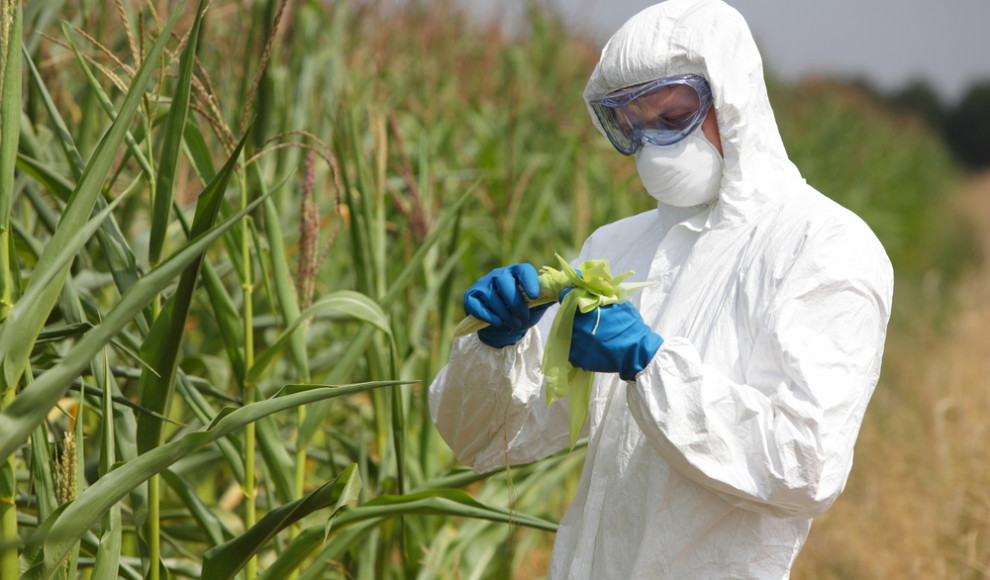Global agriculture produces enough to feed everyone if we take 2,720 kilocalories (kcal) per person per day as the intake that would satisfy most of us who lead a moderately active lifestyle. Yet there are still 925 million people who are undernourished, or about 13 percent of today’s world population, and nearly all live in less developed countries.1,2 The Global Hunger Index3 has fallen from 19.7 in 1990 to 14.7 in 2012 (less than 4.9 is low hunger; 5-9.9 moderate; 10-19.9 serious; 20-29.9 alarming; and more than 30 is considered extremely alarming), but some countries are in the “alarming” or “extremely alarming” categories (19) and urgent action is called for in Burundi, Eritrea and Haiti.
The long term effects of malnutrition cause one in three children to have stunted growth with the risks of learning disabilities, mental retardation, poor health, and chronic diseases in later life. Hunger can lead to even greater hunger because of an inability to work and learn.2 Population pressure is an underlying factor because it can lead to the collapse, or nearly so, of individual societies. 4,5 Capability-deprivation is another because it is not only a question of how people actually function that matters but their capability to function in important ways, if they so wish.6 Food price volatility is a further concern due to market uncertainties, whether driven by speculative future trading of agricultural commodities or the demands of renewable fuels for land.
How can we feed more people?
Moving large supplies of food around the world would be one possibility but it is expensive, it is often the wrong type to meet the dietary needs of those in greatest need, and it adds to the burden of greenhouse gases. So if we fail to feed everyone today, what are the chances we can feed an extra 2 billion people by the middle of this century, many of whom will live in the urban conurbations of less developed countries? Can food be produced with new technologies? Can global trade be improved through better policies? Can we reduce waste so that over 30 percent of food is saved from being discarded and used to feed hungry people?7
Global food productivity has been a success story over the past 200 years. Science and technology have given human power over nature through a mix of technological advances and social change.8 Per capita food production has been raised in many parts of the world between 1.5 and nearly 3-fold through the application of a wide range of conventional practices.9, 10 The relative global production of main grains has increased by 2.5-fold over the past 50 years (wheat, barley, maize, rice, oats), coarse grains and root crops by less than 1.5 fold (millet, sorghum, cassava and potato), and chicken numbers by about 4.5-fold, pigs by 2.5, though cattle, buffalo, sheep and goats have increased by less than 1.5-fold.10
In Africa, however, growth of cereal production per capita has been almost stagnant because of limitations in technology availability, investment, transportation, access to markets and security of land rights.11 In India, by comparison, M S Swaminathan has described how within a half century innovative steps were taken to maximize rice and wheat yields in districts where irrigation was available, building the Green Revolution. His appeal for an “ever-green” revolution through ecologically sound and sustainable policies went largely unheeded2 and poverty still presents a substantial problem in many parts. Nonetheless, a persuasive case has been strongly argued by Gordon Conway for a “doubly-green revolution” as the basis of a theory of change for developing countries.8
High-input agriculture is castigated for its intensive practices that result in environmental costs. The loss of 20 percent of topsoil due to erosion, desertification and salinity, 20 percent of agricultural land degraded by overgrazing and the generation of marginal land, and 33 percent of forests denuded by overexploitation. Climate change, decreased water availability, loss of biodiversity, urbanization and dietary upgrading (greater numbers of people obese than suffering malnutrition and starvation) are all recognized as a drain on food productivity. However, encouraging scenarios paint a picture of 100-180 percent more food becoming available for consumption provided food production is achieved through sustainable systems13 which do not have to mean a reduction in yields or profits. 14
“Sustainable intensification – growing more from less” has become the new rallying cry.10, 14,15 Each hectare of land will need to feed 5 people by 2050 compared to just 2 people in 1960, and from less available water. Whereas in the past the primary solution has been to bring more land into production and to take a greater supply of fish, such options are no longer straightforward as little additional land suitable for agriculture remains and many fisheries have been diminished. “Bright spots” will be noted, for example, by integrated management schemes for pest control, livestock, forestry, and aquaculture, with conservation of soil nutrients and water supplies by reduced tillage and harvesting, respectively.
Currently, the best yields that can be obtained from cereal crops are significantly greater than those typically obtained by farmers10 Wheat yields in the UK were 2.8t/ha in 1948 and have increased to 8t/ha now. The best wheat growers can achieve 10-12 t/ha limited only by water availability. This “yield gap,” as it is called, reflects the influence of plant breeding on yields over the last 25 years, as well as agronomic improvements, but there is little prospect of a comparable increase in the future unless the performance of crops can be radically advanced.
Will new advances in genetics help?
Closure of the “yield gap” has to be one of the major opportunities for the future since the gap can be as great as 50-60 percent in countries in Asia and South America. Accelerated breeding has become a reality through new knowledge of plant genomes, the discovery and cloning of key genes, and the use of marker genes to aid selection. Breeders have improved their understanding of the genetics of crop yield and the capacity to manipulate determining complex characters.
First-generation biotechnological techniques consist of non-transgenic (biochemical and genomic screening, marker-assisted selection) and transgenic procedures (genetic modification by exogenous DNA sequences). They have successfully modified a few simple input traits in a small number of commercial commodity crops leading to a reduction of chemical usage to control destructive pests and diseases. GM cotton as a cash crop has had qualified success but has increased overall the incomes of farmers and processors. Where lessons have been learned, plant biotechnology programs sustained by substantial investments show significant progress.16
As an agricultural innovation, the adoption of GM crops worldwide has expanded rapidly. In 2012, 17.3 million farmers (525 farmers worldwide) grew 170.3 million hectares in 28 different countries. For the first time, developing countries grew more (52 percent) biotech crops globally in 2012 than industrial countries (48 percent). Enhanced productivity has provided a major boost to farmer income and to the economic value of the four major crops – soybeans, corn, cotton and canola – with significantly reduced environmental impacts through both lower pesticide usage and carbon emissions.17 Second-generation GM technologies are waiting in the wings with the aim to enhance greater consumer benefit through increased food availability and improved nutritional quality.
Genetics can be used to overcome deficiencies in dietary micronutrients such as iron, zinc and vitamin A (“biofortification”).18 The best known transgenic approach is “Golden Rice” fortified with provitamin A. After a prolonged period in the regulatory process it is expected to be available in the Philippines within the next two years.19 The HarvestPlus consortium has breeding programs utilizing available biotechnologies for six of the most important staple foods crops. The Vitamin A partnership for Africa (VITAA) works on enhancing provitamin A in the sweet potato. Industry’s portfolio includes over 20 future novel traits with potential benefits for human health including omega-3 stearidonic acid (for cardiovascular disease) and low Raff-starch (for diabetes).
Encouraging signs are also emerging in Africa1,16 where the need is greatest. The regulatory pipelines include over 20 applications for plants with traits that provide resistance to drought, salinity, fungi and viruses, as well as enhanced nutritive value. Net economic benefits have been demonstrated but the results are variable depending on crop, trait, location and producer. They are a reminder that the science is not simple, and that time is in short supply in view of the alarming effects of global climate change. These modern planting materials have the potential to increase yields and reduce labor costs, and therefore they offer the prospect of greater economic independence and social development for farmers otherwise locked into subsistence agriculture.
As with many new technologies, people are keen to identify and embrace the benefits, but continue to have concerns about the potential risks. Multiple reviews by independent councils and academies 21,22, 23 and long-term studies in animals 24, 25 have found no evidence of human health hazards. But a new study from France initially raised concerns,26 until, after close scrutiny, it was seen to be flawed because it “appeared to sweep aside all known benchmarks of scientific good practice and, more importantly, to ignore the minimal standards of scientific and ethical conduct in particular concerning the humane treatment of experimental animals.27, 28, 29 Ethical concerns also continue30 regarding governance of the technology, the influence of the corporate sector, the significance of a precautionary approach, and the provision of consumer choice. In the EU, but not in California, if a food contains or consists of GM organisms, or contains ingredients produced from GM organisms, this must be indicated. One outcome has been that retailers withdraw such products from the shelves thereby removing consumer choice.31
In Europe it is the manner of introduction of these new technologies and the associated regulatory regime coupled to a lack of coherent political policy that has led to polarlization and a loss of consumer confidence. This has had negative effects in developing countries particularly in Africa.32 But, as Richard Flavell has commented, “crops did not evolve to serve humankind and many crops are not well designed for agriculture…. Man must continue to seek to make the crops he needs.“33
Conclusion
We urgently require the best of options and the engagement of the natural, social and political sciences. After all, food security should be for everyone and embraces production, environment, social justice and cultures.
The Malthusian polemic of the nineteenth century has been replaced today by a different metaphor, the Perfect Storm. 10,34 Godfray et al. point out that not only is this an apt descriptor of the challenge of feeding a growing population, it also encompasses the urgent battle to mitigate rising greenhouse gas emissions and global warming , to preserve the Earth’s resources, and to provide for intergenerational needs. “There is no simple solution to sustainably feeding 9 billion people, especially as many become increasingly better off and converge on rich-country consumption patterns.”10 So while the Millennium Development Goal of halving hunger by 201535 and restricting global warming to only a 2 degree rise look to be beyond our reach, it would be foolhardy to dismiss a genetic toolbox that has a unique role to play in feeding a growing population and reducing chronic malnutrition particularly in less developed countries36, 37. It is no longer a Pandora’s box. It has become part of the essential kit for those who Nobel Laureate Sydney Brenner calls “natural engineers.”
(Scroll down for questions for discussion.)
References
1 “The State of Food Insecurity in the World 2011″ FAO 2012
2 World Hunger Education Service
4 Chrispin J and Jegede F (2008) Population & Resource Crisis in Mauritius Population, Resources and Development 2nd ed. New York: Collins
5 Diamond J (2005) Collapse Viking London: New York
6 Sen A K (1999) Development as Freedom New York: Knopf Press; Alkire S (2005) Valuing Freedoms (2005) Oxford University Press: Oxford and New York
7 “Feeding the 9 Billion: The tragedy of waste” Global Food: Waste Not, Want Not Institution of Mechanical Engineers
8 Conway G (2012) One Billion Hungry Comstock Publishing Associates: Ithaca and London
9 Federoff Nina V (2010) The past, present and future of crop genetic modification New Biotechnology 27: 461-465
10 Godfray H C J, et al. The challenge of feeding 9 billion people Science 327: 812-818
11 Juma C (2011) The New Harvest Oxford University Press Oxford:New York
12 Swaminathan M S (2010) Achieving food security in times of crisis New Biotechnology 27: 453-460
13 Foley J A et al. Solutions for a cultivated planet Nature 478, 337–342 2011
14 Pretty J N et al. (2006) Resource-conserving agriculture increases yields in developing countries Environ. Sci. Technol.40: 1114
15 “Reaping the benefits: Science and the sustainable intensification of global agriculture” The Royal Society
17 GM crops: global socio-economic and environmental impacts 1996-2010
18 Beyer P (2010) Golden Rice and ‘Golden’crops for human nutrition New Biotechnology 27: 478-481
20 Socio-Economics, Biosafety & Decision Making http://socioeconomicbiosafety.wordpress.com/2012/11/22/the-gm-crop-regulatory-pipeline-in-africa-within-the-next-five-years/
21 Chassy B (2010) Food safety risks and consumer health New Biotechnology 27: 534-544
22 Parrott W (2010) Genetically modified myths and realities New Biotechnology 27: 545-551
24 Sakamoto Y, Tada Y, Fukumori N, Tayama K, Ando H, Takahashi H, Kubo Y, Nagasawa A, Yano N, Yuzawa K, Ogata A. A 104-week feeding study of genetically modified soybeans in F344 rats. Shokuhin Eiseigaku Zasshi 49:272-82, 2008.
25 Snell C, Bernheim A, Bergé JB, Kuntz M, Pascal G, Paris A, Ricroch AE. Assessment of the health impact of GM plant diets in long-term and multigenerational animal feeding trials: a literature review. Food Chem Toxicol. 50:1134-48, 2012. Epub 2011 Dec 3; Ricroch, A.E.1, Assessment of GE food safety using ‘-omics’ techniques and long-term animal feeding studies, New Biotechnology (2013).
26 GM Watch
27 Transgenic Research April 2013, Volume 22, Issue 2, pp 255-267
28 European Food Safety Authority
29 European Food Safety Authority
30 Weale A (2010) Ethical arguments relevant to the use of GM crops. New Biotechnology 27: 582-587.
31 Ag Bio Forum
32 Paarlberg R (2009) Starved for Science How Biotechnology is being kept out of Africa Harvard University Press: Cambridge Massachusetts
33 Flavell R B (2010) New Biotechnology 27: 505-516
34 “The imperfect storm,” The Grammarphobia Blog May 8th, 2008
35 Millennium Development Goals
36 An FAO e-mail conference on GMOs in the pipeline in developing countries: The moderator’s summary
Further reading
Insights – Africa’s future…Can biosciences help?
See: Biosciences for Farming in Africa (go to Publications and click on book cover).
See: Our Planet
New Big Questions:
1. Have the actions and attitudes of the industrialized countries hindered or helped less developed nations to gain new knowledge and adopt new technologies to address food security and poverty?
2. Could new scientific and technological advances be introduced into society by better means? Can we address the tension that arises between the corporate sector and the public?
3. Africa is predominantly a continent of smallholder farmers, mostly women. Should we concentrate on lifting people out of poverty through entrepreneurship, or by industrialized agriculture?
4. Why has the introduction of GM crops caused such controversy while GM vaccines and medicines are accepted?
5. Is organic food production compatible with the use of GM crops since both aim to reduce the use of chemicals and fertilizers?
6. Do patents hold up progress in increasing food production?
Discussion Summary
Genetics today places us at a vital moment in human history when we can choose not just how we are going to live, but who we are going to be…Historically it is unprecedented’. So wrote Brian Appleyard1 in his book Brave New Worlds where he examined ‘genocentrism’, the belief that genetics determines everything from sexual orientation to criminal behaviour to religious belief. He contends that genetics has displaced physics and astronomy to the sidelines, and biology that has arrived to dominate the 21stcentury.
Today’s research in the biological sciences, and genetics in particular, has moved far beyond the discovery of genes and their structure and function to how to repair if damaged, how to delete selectively, and how to switch them on and off by outside signals. Research also has the power to investigate genes that determine or influence our cognitive abilities and personality orientation. Hence its appeal to imaginative journalists as a rich source of new stories that sell newspapers in today’s fiercely competitive market. It is almost commonplace to hear people say ‘it’s in my genes’ rather than ‘it’s in my stars’.
The late Baruch Blumberg, Nobel Laureate and former Advisor to the President of the United States, told the story (slightly adapted) of fictitious Carl Jenson, living in 2020, who was on a walking holiday with his family. After a long day in the mountains he was sitting around the campfire at Granite Lake with his soya milk, allergen free and high in energy and omega-3. He fried the fish he caught earlier, genetically engineered to encourage growth in an environment with a short growing season, high altitude, and cold weather, and to provide high quality protein compatible with his immediate nutritive demands. In an idle moment he consulted his apps on individualised preventive medicine, individualised nutrition and individualised behaviour recognition. He examined the latest read-out and admitted to all within earshot – ‘Well, I’ve learned to get along with what I have’!
Yet, Stephen Rose speaks for those who dismiss biological determinism as naïve, vulgar, impoverished and mistaken2. Rather, he sees an elaborate web of interactions that occurs within cells, organisms and ecosystems in which DNA plays one part among many to shape life. So, while the reductionist methodology that has provided penetrating insights in many areas of science, in biology the primacy of populations and whole organisms means that one is obliged to work not only bottom up, but top down and to focus on systems as well as on molecules.
If genetic instructions are not our destiny, nonetheless the opportunities for the future of biotechnology appear boundless. Global food security is a case in point as we have seen in the the present essay and Comments. By definition, it does not mean that everyone is intended to be a subsistence farmer, but that everyone must possess the means to acquire an adequate diet. Progress has been made, albeit slowly, as only 10 percent of the world population of over 7 billion now live in countries with very low per capita food supplies (under 2200 calories) compared with 56 percent in 1969/70. But annual crop yield increases seen during the Green Revolution have started to decline. Disease has had a dramatic effect on the banana crop and other staple crops in East Africa. Organic farming has failed to feed a growing world population because its yields are too low to return much organic material back into the land especially in less developed countries where manure tends to be burned for fuel. So just as the world could not feed itself today with the farming methods of the 1940s, farmers can hardly expect to meet the increased global demand for food with their present methods. New approaches are needed.
The Montpelier Panel’s recent report on sub-Saharan Africa3 reinforces the idea described in the essay that sustainable intensification is an important new paradigm that offers a practical pathway towards the goal of producing more food on essentially the same area of land with less impact on the environment. As indicated in the Comments, the present crisis with further threats from population growth, increased urbanization and dietary upgrading, climate change and recurrent food prices spikes requires a more productive use of arable land, less reliance on chemical inputs such as pesticides and fertilizers, improved nutrition for populations, higher net incomes and a lowering of greenhouse gases. The Montpelier Panel sees as essential the linking of smallholder farmers (mostly women) with rural agricultural market systems, credit accessibility, security of rights to land and water, as well as the building of productivity and natural capital by genetic and ecological intensification technologies.
Celebration in 2009 of the 150th anniversary of the publication of the ‘Origin of Species’ took us back to Darwin’s landmark insights about genetic variation and natural selection as the agents of evolution, and the role of adaptation as a key to survival. His ideas were forged in the heat of the industrial revolution when the key incentive in the competitive struggle was the pursuit of profits that provided wealth, power and status, either directly to owner-managers or indirectly to shareholders. Today, genetics underpins many new initiatives in the upsurge of sub-Saharan Africa development but, as touched on in the discussion, the key incentive is the entrepreneurial spirit that builds new and sustainable environments and which seeks to transform subsistence living by a new paradigm.
Scroll down for new Big Questions.
1 Appleyard B (1999) Brave New Worlds Harper Collins Publishers, London
2 Rose S (1997) Lifelines, Biology, Freedom, Determinism Allen Lane The Penguin Press, London; Rose, Hilary and Rose, Stephen (2012) Genes, Cells and Brains: Bioscience’s Promethean Promises Verso London
3 The Montpellier Panel, 2013, Sustainable Intensification: A New Paradigm for African Agriculture, London Agriculture for Impact (www.ag4impact).
Two New Big Questions
1. Could new scientific and technological advances be introduced into society by better means? Can we address the tension that arises between the corporate sector and the public?
2. Africa is predominantly a continent of smallholder farmers, mostly women. Should we concentrate on lifting people out of poverty through entrepreneurship, or by industrialized agriculture?












This article puts agricultural innovation like biotechnology in the overall context of demographic and environmental challenges. More than 16 million farmers are growing GM crops around the world today, 90 percent of them are resource-poor farmers in developing countries. African smallholder farmers are some of the most impoverished people in the world and they account for 80 percent of food production in sub-Saharan Africa. A report by the Overseas Development Institute showed that issues of poverty can be best tackled by investment in the agricultural sector, with GDP growth in agriculture contributing twice as much to poverty reduction than any other sectors. There is certainly an untapped potential here for economic development in a sustainable way.
By offering new, improved and adapted agricultural crops such as drought or saline resistant plant or crops with micro-nutrients, agricultural biotech can contribute to meeting the Millennium Development Goals on reducing poverty and to the fight against hunger and malnutrition. The additional income derived from GM crops can enable more farmers to consistently meet their subsistence needs and to improve the standard of living of their households. Remote farmers in developing countries can directly profit from agricultural biotechnology since the technology is built into the seed and allows them to benefit from it without the need for costly specialised machinery with its associated increased energy requirements.
However, we see that reticence to GM crops in Europe has often inhibited the uptake of agricultural innovation in developing countries, due to Europe having exported fears and political barriers. As we look to the future, we should focus our efforts collectively to answering the following question: How can we ensure that everyone has access to affordable, safe and nutritious food, that farmers have a competitive and sustainable future, and that they can cope with the effects of climate change on agricultural land? To achieve sustainable food security, we will probably need many different techniques, but the important point is that we must seize the potential of all of them, including biotechnology.
By all means use whatever techniques we can develop to efficiently produce more food to feed humanity. However, more emphasis on translocation of people to wherever there is food and food producing jobs would be more advisable. Trying to grow food crops on marginal land may be foolish in the long run, as climate change and climatic instability may such render such efforts futile. Moving people rather than food could be a new paradigm. Industry and agriculture will have to produce what people need rather than what material goods they desire.
Of course there will be some cultural problems in translocating masses of people. However culture is something that arises spontaneously in any group of people. It is the way we reconcile differences between people for the common good. I may be compared with the ‘handshake protocol’ that pieces of communication equipment go through before they exchange information or data. Human cultures will have to be changeable and adapt, otherwise we will perish through starvation, fighting and wars.
We have nearly reached a critical point in our recent history and if we do not adapt peacefully with the common good in mind, then there may be less of us around in the future. We are here to live and work together, and undergo spiritual evolution. Leadership will be important, and we don’t need the current political leaders that kow-tow to the greedy interests of industry, agriculture, finance, and commerce in order to gain or maintain position and power. Greedy speculators in all sectors have done little to ensure confidence in the future, and mostly have had the opposite effect.
We have had 200 years of ‘boom and bust’ following Adam Smith’s ‘The Wealth of Nations’. He was in error, as the wealth of a people is measured by the resilience of its community.
The next few years is really going to test us humans.
EuropaBio emphasises the importance of adopting many technological advances to deal with the problem of food security in the future, and it would be wrong to misconstrue the argument in my essay and imply that a single efficiency change, a policy change, or a single breakthrough such as transgenic crops is the only way to food security and a sustainable future. China, one the world’s two most populous countries, illustrates the multifaceted nature of the problem. China requires investment in many areas of food production including more efficient forms of irrigation, improved use of fertilizers, the adoption of better animal feeds alongside the traditional use of waste organic matter, and sound methods to reduce harvest and post-harvest grain losses. Transgenic crops are but one of many technological and husbandry options that have to be evaluated because they promise to contribute in a rational way towards the decent nutrition that will be needed by existing and coming generations.
The remarks of ianful remind us the UN Human Development Report (1998) which highlighted vividly the difference that exists between the 20% of the world’s richest people who accounted for 86% of private consumption and the poorest 20% with only 1.3%. Improvements over the past decade have occurred though the rate of change has been lamentably slow. Nobel Peace Prize Laureate, the late Norman Borlaug, father of the Green Revolution, warned that hungry people are angry people and in today’s world we have noted that millions of people remain hungry with slender prospects of food security. When we look at how people living in rich nations rate their priorities, scant evidence exists of Christopher Patten’s definition of sustainable development given in his Reith Lecture of 2000 – ‘living here as though we were intending to stay for good, not just visiting for the weekend’ – or of the Brundtland Commission recommendations (1987) that linked intergenerational justice and a concern for the poor in each generation with the need to leave the world as we found it. Yet adaptation to changing climate is without doubt a high priority, and migration from rural areas into cities is a common phenomenon. But there is a good argument for raising standards in off-grid villages to providing opportunities for entrepreneurial activity rather than leaving the future to mega-cities.